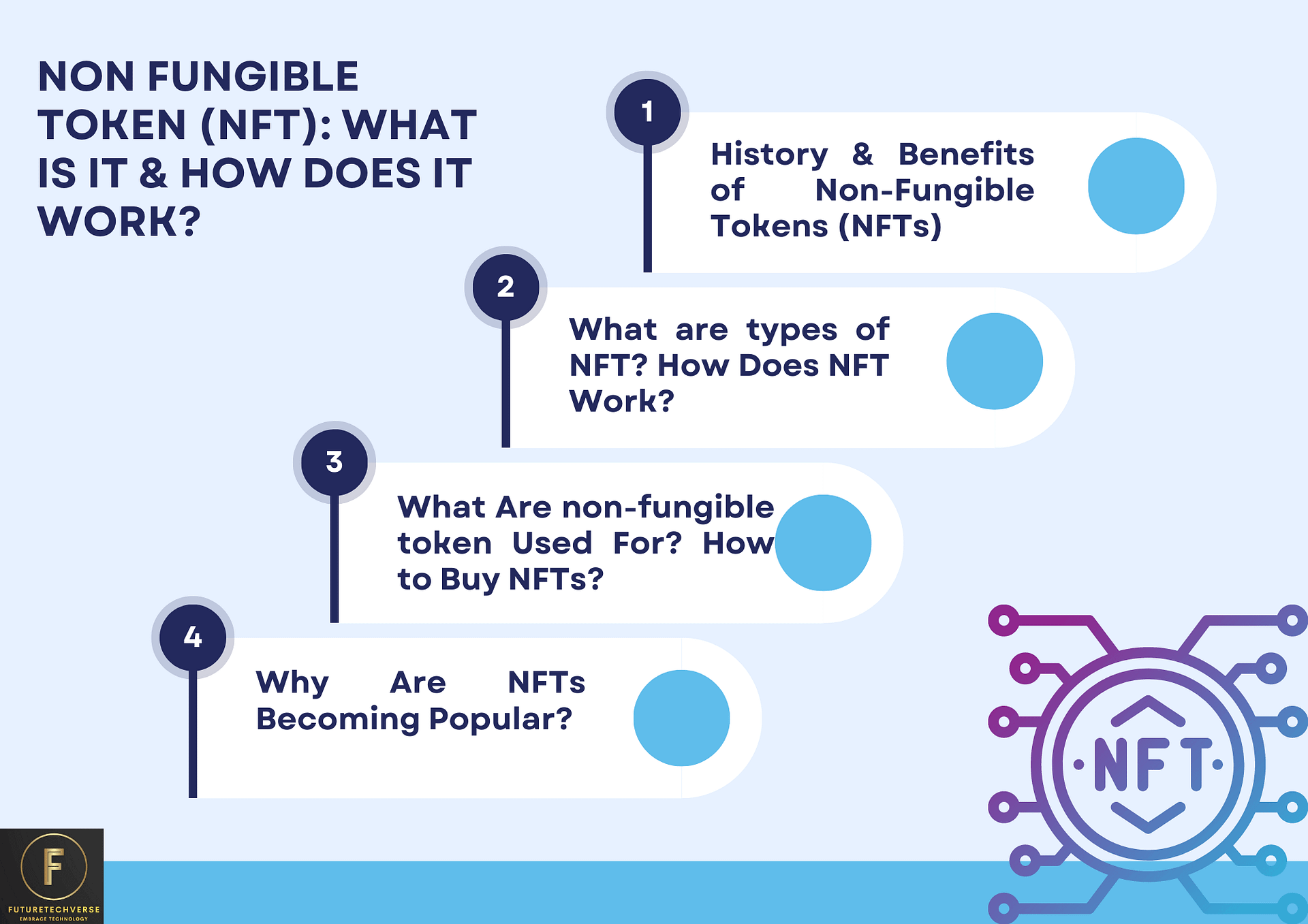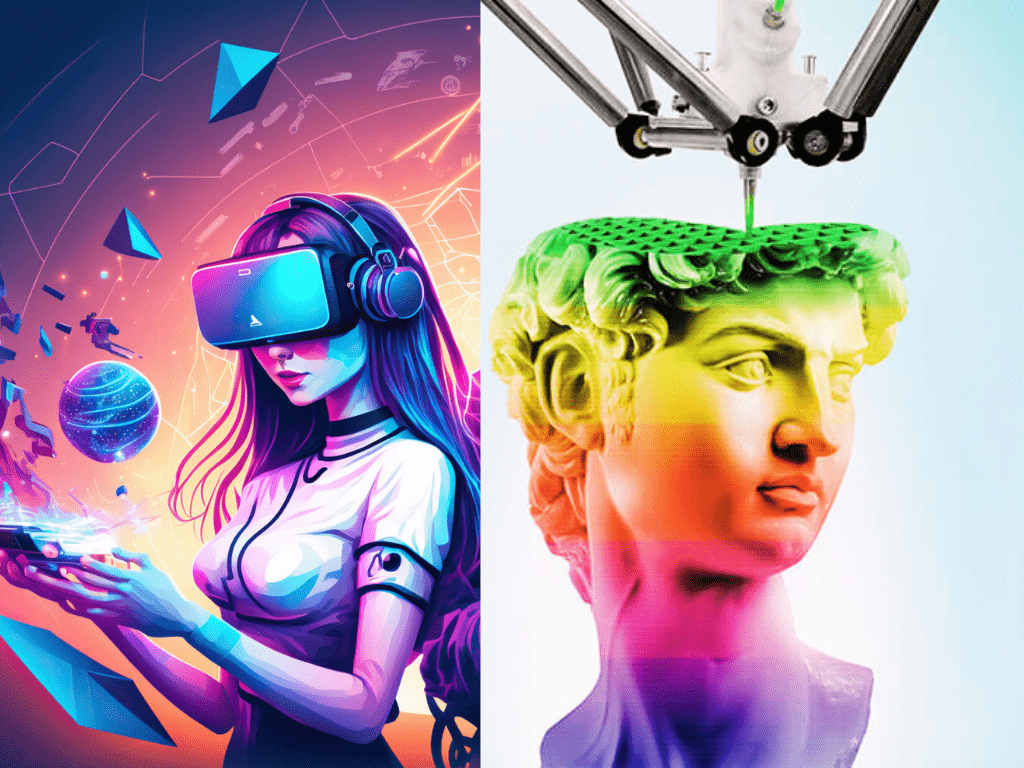What Is a Non Fungible Token (NFT)?
Non fungible token or NFT is a digital artwork that shows ownership or proof of authenticity of a unique item or content using blockchain technology. NFTs are different from cryptocurrencies like Bitcoin or Ethereum because they are unique and cannot be exchanged on a like-for-like basis.
- Non fungible tokens have gained significant popularity in the art industry, allowing artists to sell their digital creations as unique pieces of art.
- Through blockchain technology, NFTs provide a transparent and immutable record of ownership, eliminating the risk of counterfeits or duplication.
- The use of NFTs extends beyond art and can be applied to various industries such as gaming, collectibles, music, and even real estate.
- One of the most notable examples of NFTs is the sale of Beeple’s artwork for $69 million, highlighting the potential for immense value in the digital art market.
- NFTs have sparked debates surrounding environmental concerns due to the high energy consumption associated with blockchain technology.
History of Non Fungible Tokens (NFTs)
For understanding NFTs we need to understand the concept of NFTs, which dates back to 2012 with the creation of colored coins on the Bitcoin blockchain. However, the popularity of NFTs skyrocketed in 2017 with the launch of CryptoKitties, a blockchain-based game where players could buy, sell, and breed unique digital cats.

Benefits of Non-Fungible Tokens
NFTs have several benefits:
- Proof of ownership and authenticity:
NFTs provide a verifiable record of ownership and authenticity for digital assets, ensuring their uniqueness and scarcity.
- Artistic and creative opportunities:
NFTs have revolutionized the art world by providing new ways for artists to showcase and sell their digital creations directly to collectors.
- Traceability and transparency:
The use of blockchain technology in NFTs allows for transparent transaction records and provenance tracking, reducing the risk of fraud or forgery.
- Residual income for creators:
NFTs can include smart contracts that automatically pay creators royalties each time their digital asset is sold or traded.
What are types of NFT?
NFTs, or non fungible tokens, come in various types catering to different digital assets. Here are some common types of NFTs:
- Art NFTs: These NFTs represent digital artworks, including illustrations, paintings, and sculptures.
- Collectible NFTs: These NFTs are similar to traditional collectibles and can be anything from trading cards to virtual pets.
- Gaming NFTs: These NFTs are specific to the gaming industry and can include in-game items, characters, and virtual real estate.
- Domain Name NFTs: These NFTs represent ownership of internet domain names.
- Music NFTs: These NFTs are associated with music and can include albums, songs, and concert tickets.
- Sports NFTs: These NFTs are related to sports and can include player cards, game highlights, and memorabilia.
- Metaverse NFTs: These NFTs represent virtual land, buildings, and objects within decentralized virtual worlds.
These are just a few examples, and the possibilities for NFTs are continually expanding as the technology evolves.
How Does NFT Work?
NFTs work by utilizing blockchain technology to create a unique token that represents ownership of a specific digital asset, such as an image, video, music file, or even virtual real estate.
The token contains metadata that describes the asset and verifies its authenticity and ownership.
What Are non fungible token Used For?
NFTs are used for various purposes:
- Collecting and trading unique digital assets.
- Supporting artists and creators by providing a direct platform for selling their digital works.
- Creating virtual economies within video games and virtual worlds.
- Tokenizing real-world assets such as real estate, luxury goods, or intellectual property rights.
How to Buy NFTs?
To buy NFTs, follow these steps:
- Choose an NFT marketplace that supports the specific blockchain on which the NFTs are created.
- Create an account on the chosen marketplace.
- Connect a digital wallet that is compatible with the marketplace.
- Browse the available NFTs and select the one you want to purchase.
- Place a bid or buy the NFT at the listed price.
- Complete the transaction using cryptocurrency.
- Once the transaction is confirmed, the NFT will be transferred to your digital wallet.
Why Are NFTs Becoming Popular?
NFTs are gaining popularity for several reasons:
- Unique ownership: NFTs allow individuals to own and trade unique digital assets, giving them a sense of exclusivity and ownership in the digital realm.
- Supporting creators: NFTs enable artists and creators to monetize their digital works directly, without the need for intermediaries or traditional art market gatekeepers.
- Investment opportunities: Some view NFTs as potential investment assets, similar to collectibles or rare items, with the potential for increased value over time.
- Technological innovation: NFTs represent the intersection of blockchain technology, digital art, and virtual economies, creating new possibilities and excitement.
Frequently Asked Questions
How do NFTs work?
NFTs utilize blockchain technology to establish and verify ownership, authenticity, and provenance. Each NFT is assigned a unique identifier, making it distinguishable from all other tokens. This enables artists, creators, and collectors to buy, sell, and trade one-of-a-kind digital assets directly.
What can NFTs be used for?
NFTs have gained popularity within the art and collectibles space, as they enable artists to tokenize their work and sell it as a unique digital asset. However, NFTs can also represent ownership rights over physical assets like real estate or even virtual items within video games.
How do I buy NFTs?
To purchase NFTs, you typically need a digital wallet that is compatible with the blockchain platform on which the NFTs are created. You can visit various online marketplaces that host NFT sales and auctions, where you can browse and buy from a wide range of available NFTs.
What are the environmental concerns associated with NFTs?
As NFTs rely on blockchain technology, particularly the Ethereum network, there have been concerns about the environmental impact of the energy consumption required for transaction processing. Ethereum is working on transitioning to a more energy-efficient system called Ethereum 2.0, addressing these concerns.
Are NFTs here to stay?
While the NFT market has experienced significant growth and media attention, its long-term sustainability is uncertain. The technology and concept behind NFTs have the potential to disrupt various industries, but like any emerging trend, its future adoption and evolution are yet to be determined.

